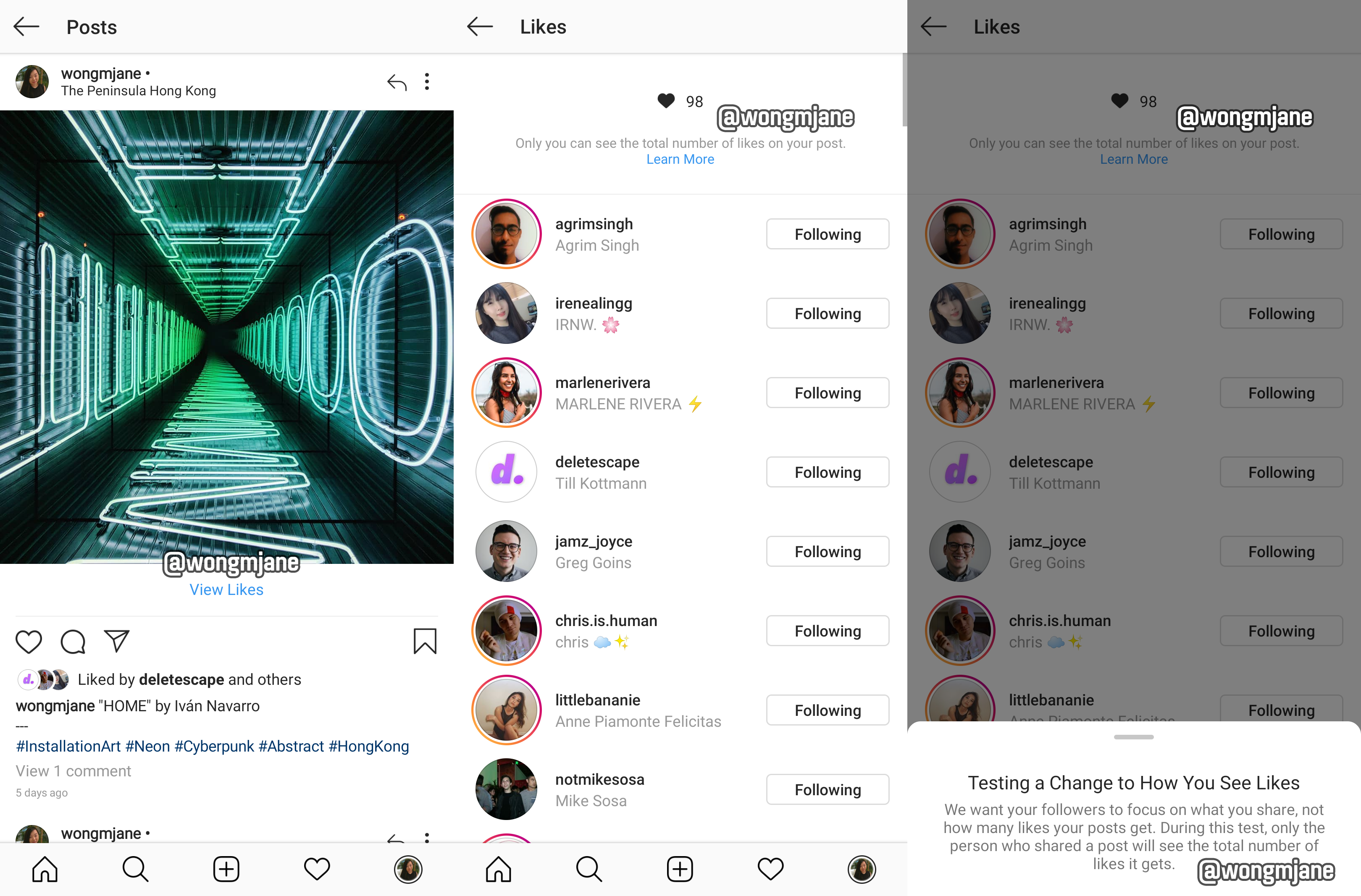“We want your followers to focus on what you share, not how many likes your posts get. During this test, only the person who share a post will see the total number of likes it gets.” That’s how Instagram describes a seemingly small design change test with massive potential impact on users’ well-being.
Hiding Like counts could reduce herd mentality, where people just Like what’s already got tons of Likes. It could reduce the sense of competition on Instagram, since users won’t compare their own counts with those of more popular friends or superstar creators. And it could encourage creators to post what feels most authentic rather than trying to rack of Likes for everyone to see.

The design change test was spotted by Jane Manchun Wong, the prolific reverse engineering expert and frequent TechCrunch tipster whose spotted tons of Instagram features before they’re officially confirmed or launched. Wong discovered the design change test in Instagram’s Android code and was able to generate the screenshots above.
You can see on the left that the Instagram feed post lacks a Like count, but still shows a few faces and a name of other people who’ve Liked it. Users are alerted that only they’ll see their post’s Like counts, and anyone else won’t. Many users delete posts that don’t immediately get ‘enough’ Likes or post to their fake ‘Finstagram’ accounts if they don’t think they’ll be proud of the hearts they collect. Hiding Like counts might get users posting more since they’ll be less self-conscious.
An Instagram confirmed to TechCrunch that this design is an internal prototype that’s not visible to the public yet. A spokesperson told us: “We’re not testing this at the moment, but exploring ways to reduce pressure on Instagram is something we’re always thinking about.” Other features we’ve reported on in the same phase, such as video calling, soundtracks for Stories, and the app’s time well spent dashboard all went on to receive official launches.

Instagram’s prototypes (from left): feed post reactions, Stories lyrics, and Direct stickers
Meanwhile, Wong has also recently spotted several other Instagram prototypes lurking in its Android code. Those include chat thread stickers for Direct messages, augmented reality filters for Direct Video calls, simultaneous co-watching of recommended videos through Direct, karaoke-style lyrics that appear synced to soundtracks in Stories, emoji reactions to feed posts, and a shopping bag for commerce.
It appears that there’s no plan to hide follower counts on user profiles, which are the true measure of popularity but also serve a purpose of distinguishing great content creators and assessing their worth to marketers. Hiding Likes could just put more of a spotlight on follower and comment counts. And even if users don’t see Like counts, they still massively impact the feed’s ranking algorithm, so creators will still have to battle for them to be seen.

Close-up of Instagram’s design for feed posts without Like counters
The change matches a growing belief that Like counts can be counter-productive or even harmful to users’ psyches. Instagram co-founder Kevin Systrom told me back in 2016 that getting away from the pressure of Like counts was one impetus for Instagram launching Stories. Last month, Twitter began testing a design which hides retweet counts behind an extra tap to similarly discourage inauthentic competition and herd mentality. And Snapchat has never shown Like counts or even follower counts, which has made it feel less stressful but also less useful for influencers.
Narcissism, envy spiraling, and low self-image can all stem from staring at Like counts. They’re a constant reminder of the status hierarchies that have emerged from social networks. For many users, at some point it stopped being fun and started to feel more like working in the heart mines. If Instagram rolls the feature out, it could put the emphasis back on sharing art and self-expression, not trying to win some popularity contest.
from TechCrunch https://tcrn.ch/2UqN1aL

No comments:
Post a Comment